
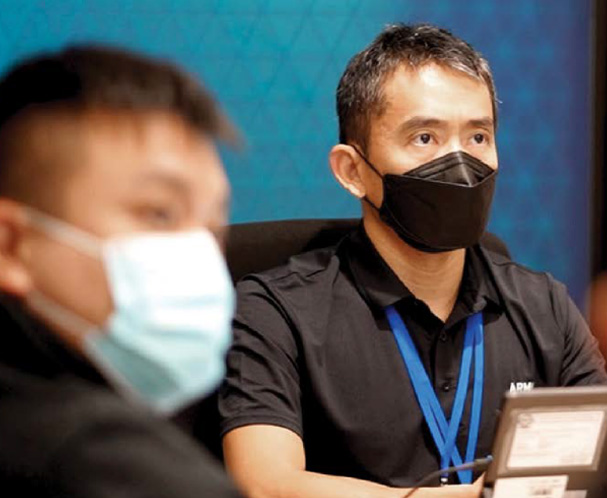
COL Tong Yi Chuen chairing a meeting in the Home Recovery Task Group.
Source: MINDEF
It was under those circumstances that the SAF's Home Recovery Task Group (HRTG) was set up. The mission was clear: as Singapore transitioned to living with COVID-19 as an endemic disease, HRTG would help MOH to strengthen their home recovery system so that all population groups covered by the HRP would be given the resources they needed for home recovery. HQ Singapore Combat Engineers was activated, and on the evening of 24 September 2021 Chief Engineer Officer COL Tong Yi Chuen alerted his team to their impending mission. They attended the first virtual briefing with MOH that night and placed their sub-units on standby. The next day, COL Tong and his core team reported at Harbourfront Centre and were briefed by MOH officials on the current situation and processes. They also discussed how HRTG could contribute, both immediately and over the longer term.
After a deliberate Mission Analysis, the team identified three focus areas for HRTG. First, it would quickly build up call centre capabilities to address public concerns. Second, it would review current processes and then implement a scalable HRP nationwide. Third, it would incorporate technology solutions so that there could be a more sustainable use of manpower and resources over the long term.
The next four days were spent planning HRTG's structure and manpower requirements, and coordinating training. HRTG was now ready to go, and on 29 September 2021 it started operations in the call centres. 48th Battalion Singapore Armoured Regiment (48 SAR) and 38th Battalion SCE (38 SCE) assisted in the Inbound Call Centre, fielding calls from the public about the HRP. The other sub-unit, 35 SCE, assisted in the Outbound Call Centre, which reached out to register COVID-19 patients on HRP and guided them through the home recovery process as Home Recovery Buddies.
Planners from the earlier task forces readily leaned forward to help HRTG HQ. COL Liew Kok Keong, who had served in the HSTF and was later deployed to MOTF as Chief-of-Staff, regularly shared his operational experience with HRTG. MAJ Nicholas Tjandra, who also was from HSTF, served in HRTG HQ as Head Anticipatory Operations Centre to do forward planning, monitor policy developments and their impact on HRTG operations, and foster partnerships with adjacent MOH and inter-Ministry task forces to strengthen the HRP. Like MOTF, HRTG tapped the collective experience of COVID-19 operations “veterans” across the SAF to rapidly build baseline capability and processes so that they would have more bandwidth to focus on novel and emerging challenges.
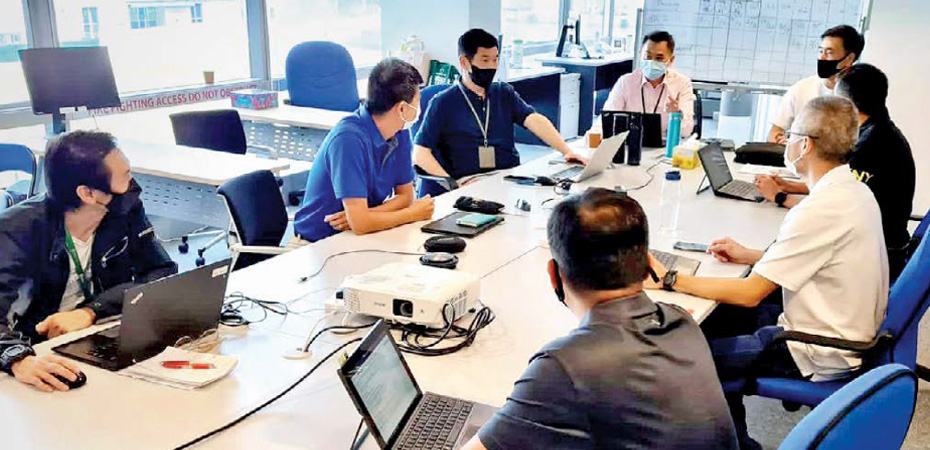
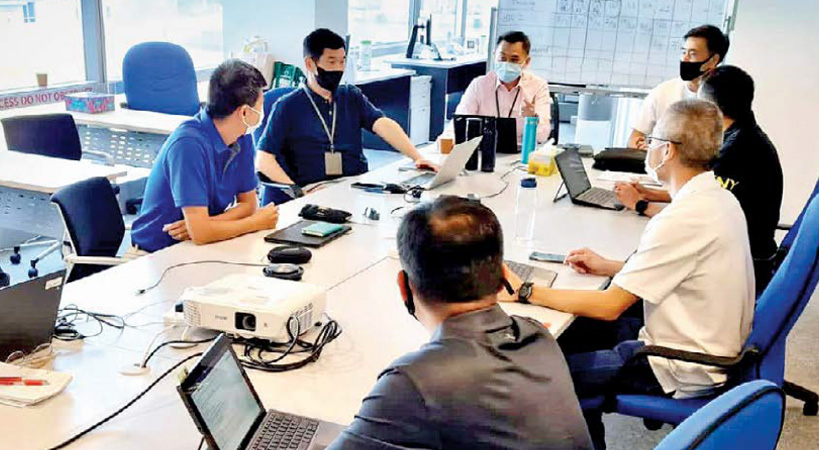
COVID-19 operations “veterans” across the SAF sharing their operational experiences with the HRTG Command Team, comprising representatives from the SAF and MOH's Case Management Task Group and Quarantine Operations Task Group.
Source: MINDEF
In parallel, resources and expertise from across the SAF and many government agencies were pooled so that there was data for the HRTG to measure its effectiveness. The team also worked with the RSAF Innovation SWiFT Office, GovTech's Open Government Products Office, and MOH's Information Fusion Centre to consider technology solutions so that the rapidly rising case numbers could be handled efficiently.

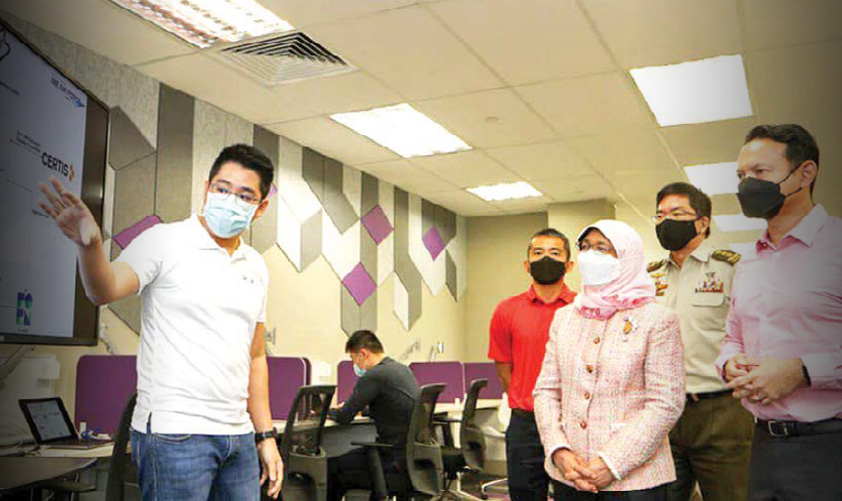
ME5 Jonathan Ng, a solutions architect in the RSAF Innovation SWIFT Office, briefing President Mdm Halimah Yaacob on the HRTG's call ticketing system.
Source: MINDEF

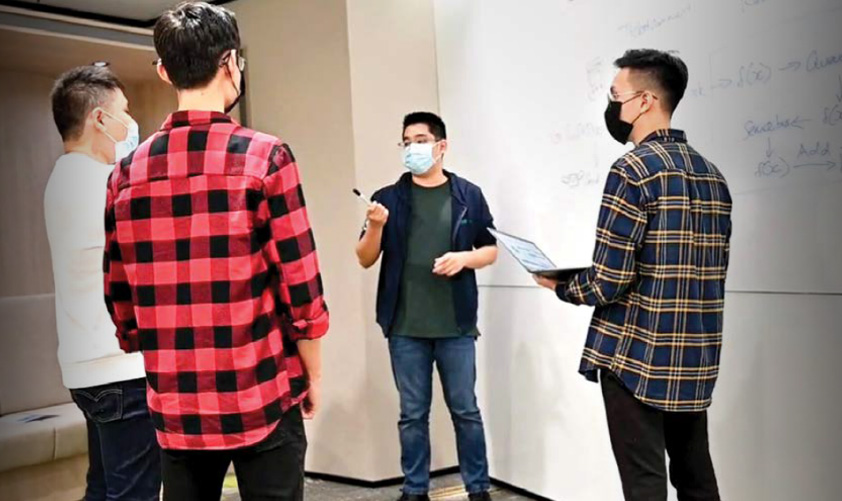
The RSAF Innovation SWiFT Office developed digital solutions that enabled large amounts of data from different parts of MOH to be seamlessly integrated, as well as an automated messaging system.
Source: MINDEF
HRTG handling the HRP effort would require an empathetic approach. Emotions were involved. The public was frustrated and their confidence in the Government's handling of COVID-19 was affected. The team's MOH partners were fatigued after their long battle with COVID-19 and disheartened by the public's harsh criticisms. It was necessary to be sensitive and show empathy to both the members of the public seeking help and advice, as well as the MOH colleagues who were hoping that HRTG could bring fresh perspectives and energy to the cause.
HRTG played the role of the supporting force that was “here to help” their MOH colleagues, especially as they would be taking the operational system back to MOH at the end of the HRTG deployment. The pilot programme had worked, so it was necessary to be sensitive to MOH's perspective on the HRP. It was with this sensitivity that the HRTG team set out to partner MOH in strengthening the established HRP processes, to scale it up much more extensively and rapidly than was originally planned for.